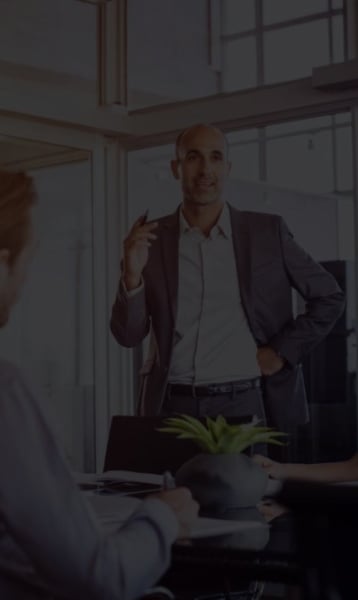This interactive portal improves the analytic experience so you can easily interact with data.
The Effect of Long COVID and Chronic Conditions on Employee Productivity and Disability Claims
-1.png?width=900&name=Untitled%20design(1)-1.png)

Jennifer Santisi
US employees with long COVID along with certain comorbid conditions have a two-fold increase in missed workdays, according to Integrated Benefits Institute analysis
The Integrated Benefits Institute (IBI), a health and productivity research non-profit, analyzed the impact of long COVID and certain chronic conditions on productivity, disability, and disability claims. The chronic conditions highlighted in the analysis include cancer, cardiovascular disease, diabetes, obesity, musculoskeletal, respiratory, and mental health conditions.
The prevalence of long COVID has had a profound impact on disability claims, work absences, and healthcare expenses. According to a recent analysis of workforce absences in the Journal of Public Economics, around 500,000 individuals in the US were removed from the workforce due to COVID-related illnesses between March 2020 and June 2022.
Nearly one in five US adults who have had COVID-19 are still experiencing persistent symptoms three or more months after their initial COVID-19 diagnosis. The likelihood of developing long COVID was found to be more than five -times higher in those with severe COVID-19 symptoms, compared to those with mild or no symptoms. Those with moderate symptoms are more than two times more likely.
IBI’s analysis used data from the National Health Interview Survey (NHIS) and the IBI Benchmarking Portal, the largest collection of claims for employer-sponsored short-term disability (STD), long-term disability (LTD), family and medical leave (FML), and workers’ compensation (WC) in the US. The study's findings shed light on the complex relationship that exists between long COVID, chronic conditions, and work-related outcomes.
The impact of chronic conditions
Almost half (47%) of individuals with long COVID report obesity as a comorbid condition. More than one third (38.5%) of individuals with long COVID also report having a mental health condition – specifically anxiety or depression, followed by musculoskeletal conditions (22.7%). Approximately 5.9% of long COVID cases are also affected by heart disease or stroke, 6.1% with cancer, and 9.1% with diabetes.
Certain chronic conditions are more strongly associated with developing long COVID. Those with asthma or chronic obstructive pulmonary disease (COPD) have 94% increased odds of developing long COVID. Those with musculoskeletal disorders have a 49% increase, obesity a 52% increase, and those with anxiety and depression have 38% increased odds of experiencing long COVID.
Long COVID in individuals without any chronic conditions results in an average of 10.2 missed workdays. Combining chronic illnesses with long COVID leads to a two-fold increase (102%) in missed workdays, from 8.9 to 17.9 missed days. For example, those with cardiovascular disease and long COVID results in an average of 26.2 workdays missed, a stunning 122.1% increase above 11.8 workdays missed for cardiovascular disease alone.
Startlingly, 52.5% of NHIS working-age respondents with obesity and comorbid long COVID have a work disability, underscoring the significant obstacles they must overcome. The comorbid long COVID and mental health disorders group has an even higher work disability rate (61.1%). And 37.1% of people with MSK conditions and comorbid long COVID report a work disability.
Disability claims
Long COVID has had a significant impact on disability claims, duration, and costs. According to IBI’s Benchmarking Portal data, long COVID had 4,442 STD claims in 2021. The industries that report the highest STD claims are manufacturing (13,671 claims) and services (11,860 claims), followed by the finance, insurance, & real estate sector with 5,534 claims.
For COVID-19, the average payment per closed STD claim stands at $2,739. Long COVID, however, has a notably higher average STD payment of $5,417, reflecting the more substantial financial burden associated with managing long COVID-related STD claims. The construction sector has the highest average payment for long COVID-related STD claims, at $11,744, followed by the services sector with a significantly higher than average payment of $8,779 per closed long COVID claim.
Long COVID has a much higher number of calendar days lost per STD claim at 90 days, compared with COVID-19 claims (22 days). Notably, 16% of these STD claims transitioned into LTD claims, resulting in 5,427 cases of long COVID LTD claims. These LTD claims had significantly higher payments, averaging $9,307 per closed claim. Importantly, 35% of individuals with LTD claims successfully returned to work within two years.
What does this mean for employers?
Employers face the challenge of navigating reduced productivity, disability claim costs, and the prolonged symptoms experienced by individuals with long COVID. IBI spoke with HR and benefits managers on how they are approaching the challenges this diagnosis presents.
- Recognize long COVID's varied and extended symptoms, encompassing physical, cognitive, and emotional issues.
- Promote a gradual transition back to work and consider the challenges employees face.
- Be proactive in establishing policies to accommodate employees with long COVID.
- Consider implementing a trial period and reevaluation process for accommodation requests.
- Be prepared for the possibility of relapse after an employee returns to work.
- Acknowledge long COVID's potential classification as a disability under the ADA.
- Collaborate with affected employees to determine effective accommodation solutions.
- Maintain open lines of communication to tailor accommodations based on specific symptoms and limitations.
- Provide flexible scheduling to accommodate variations in energy levels and symptom severity.
- Prioritize employees' mental well-being by encouraging behavioral therapy or counseling.
For more information the report and infographic are available upon request, please contact Jennifer Santisi at jsantisi@ibiweb.org.
About Integrated Benefits Institute
The Integrated Benefit Institute’s independent research, industry-leading tools and data resources help companies link health-related programs to the outcomes that maximize the contributions of people to productivity and business performance. Founded in 1995, IBI is a national nonprofit research organization and business association serving 1,200 employer and supplier members and their 22 million employees. For additional information, please visit www.ibiweb.org and follow us on Twitter and LinkedIn.
- December 2024 (1)
- November 2024 (1)
- July 2024 (1)
- June 2024 (1)
- March 2024 (1)
- February 2024 (1)
- January 2024 (1)
- December 2023 (1)
- November 2023 (1)
- August 2023 (1)
- July 2023 (1)
- May 2023 (2)
- February 2023 (2)
- January 2023 (2)
- November 2022 (1)
- October 2022 (1)
- September 2022 (1)
- March 2022 (1)
- February 2022 (1)
- January 2022 (1)
- December 2021 (1)
- September 2021 (1)
- April 2021 (2)
- December 2020 (1)
- October 2020 (1)
- September 2020 (2)
- August 2020 (2)
- July 2020 (1)
- April 2020 (1)
- March 2020 (1)
- November 2019 (1)
- September 2019 (1)
- July 2019 (1)
- June 2019 (2)
- May 2019 (1)
- April 2019 (1)
- February 2019 (1)
- November 2018 (1)
- September 2018 (1)
- August 2018 (1)
- June 2018 (1)
- March 2018 (1)
- March 2017 (1)
- February 2017 (2)
- Absence (1)
- Absence Management (1)
- analytics (1)
- Behavioral Health (1)
- Benchmarking (2)
- Benchmarking Analytics (1)
- Benefit Design (2)
- Benefits + Plan Design (2)
- Blog (1)
- Business Performance (1)
- CDHP (1)
- CFO Survey (2)
- COVID-19 (6)
- Depression (3)
- director (1)
- Disability Leave (7)
- Extreme Weather (2)
- Family + Parental Leave (3)
- FMLA (2)
- Health + Productivity Management (3)
- Healthcare (1)
- Healthcare Costs (2)
- lost time (1)
- Manage Absence (2)
- Medication Adherence (1)
- Mental + Emotional Health (4)
- Mental Health (2)
- new hire (1)
- Parental / Family Leave (1)
- Patient-Centered (1)
- Press Releases (50)
- Preventive Care (1)
- Productivity (3)
- Research (2)
- Research Report (1)
- Return to Work (1)
- Sick Leave (2)
- Telehealth (1)
- Telemedicine (1)
- Worker's Compensation (1)
- Workplace Health Programs (1)




























